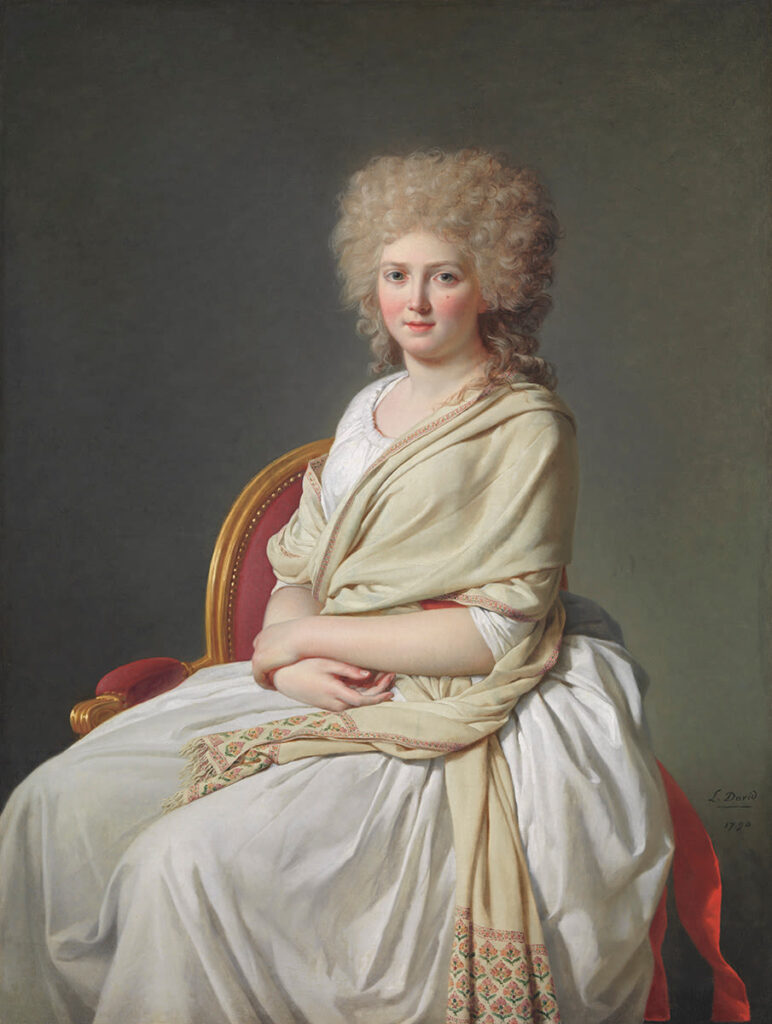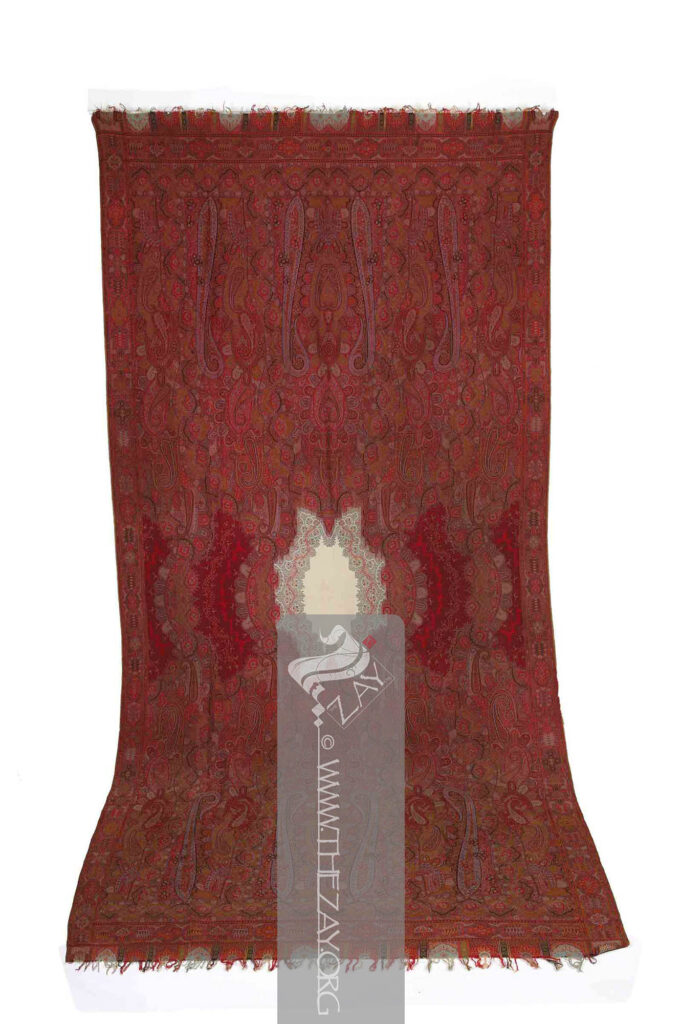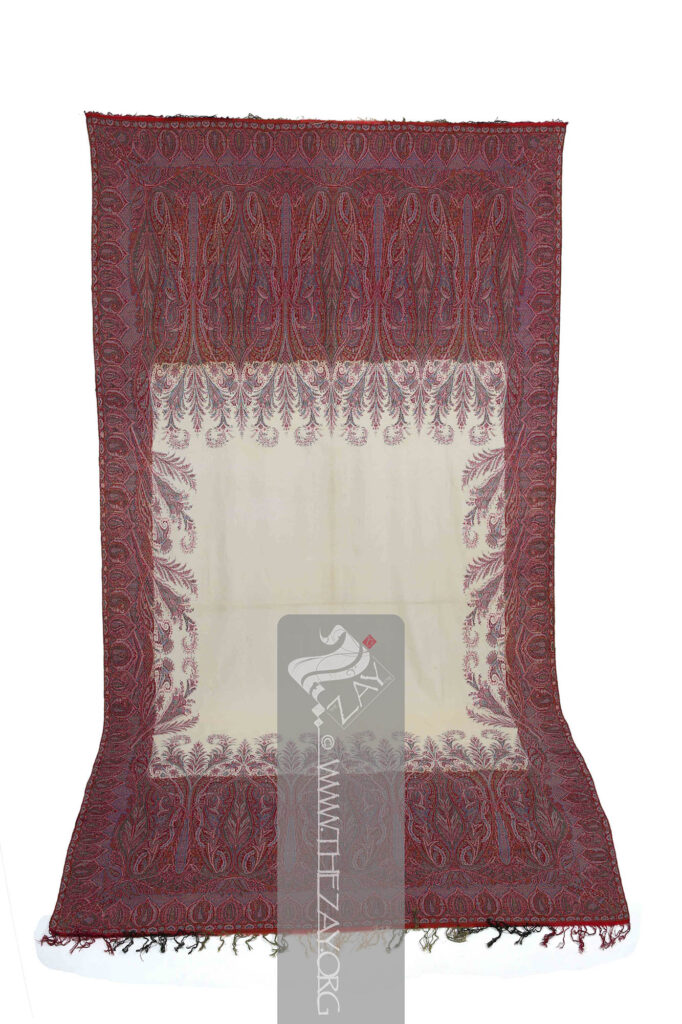
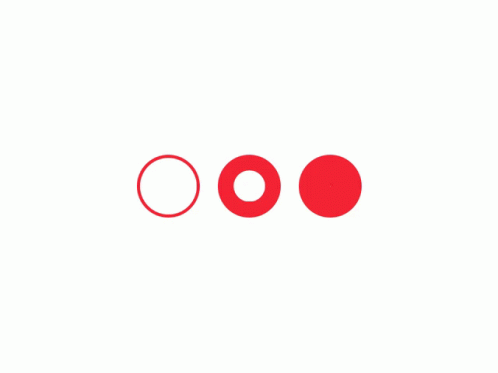


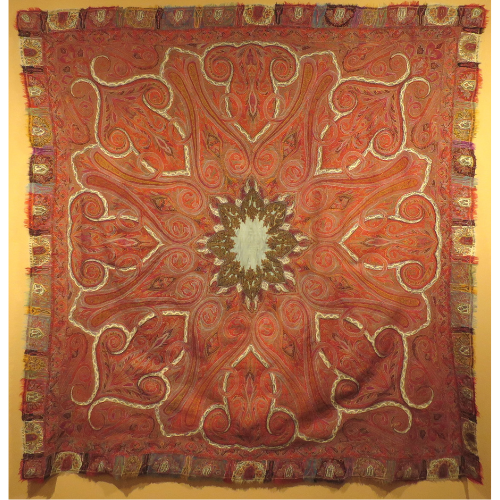




Jamawar: (Hindi, Jama: robe and war/var: chest or body), a portmanteau word meaning anything that covers the body. Originally brocade silk of intricate and overlapping patterns first introduced by the traders from Samarkand and Bukhara to the subcontinent and was adopted in wool specifically in pashmina Pāshmīna: (Persian: pašm or pashm – wool), pashmina scarves are eponymous woolen shawls from the Kashmir region with a history dating back to more than 500 years. It is the finest variant of spun cashmere wool extracted from the downy undercoat of the Changthangi goats found in the Ladakh province. .
shawls inspired from the silk brocades of Central Asia brought by the traders from Samarkand and Bukhara and adopted in pashmina Pāshmīna: (Persian: pašm or pashm – wool), pashmina scarves are eponymous woolen shawls from the Kashmir region with a history dating back to more than 500 years. It is the finest variant of spun cashmere wool extracted from the downy undercoat of the Changthangi goats found in the Ladakh province. wool were commonly used by both men and women of the subcontinent. Traditionally woven on a hand-drawn loom (draw loom), an original Kashmir shawl Shawl: (Persian: shāl from Hindi: duśālā – Shoulder Mantle), a shawl is a South Asian version of a scarf worn or wrapped loosely over the shoulders and is usually made of wool. in typical kaniKani: (Kashmiri Kashmiri: (Hindustani: Kashmir – a region in South Asia), a term used to denote or identify anything related to the region – its people, their language, culture, art and craft, society etc. : Small sticks, also a name of a village in Kashmir), a type of weave that originated in this village where wooden bobbins or sticks are used as spools on the loom to create intricate patterns instead of a shuttle.
(twillTwill: (English), one of the three primary textile weaves is defined by its prominent diagonal rib pattern. The fabrics woven in this method typically exhibit a pronounced, often darker front side, while the back is lighter.
tapestry Tapestry: wall hanging or other large piece of fabric that is woven in coloured weft Weft: one of the two basic components used in weaving that transforms thread or yarns into a piece of fabric. It is the crosswise thread on a loom that is passed over and under the warp threads. threads or embroidered with a decorative design. Typically made of wool, but they can also be made of other materials such as silk, linen, or cotton. Often used to decorate homes, churches, and other buildings. ) weave using wooden bobbins took over a year to complete. Parts of the shawl Shawl: (Persian: shāl from Hindi: duśālā – Shoulder Mantle), a shawl is a South Asian version of a scarf worn or wrapped loosely over the shoulders and is usually made of wool. were usually woven on different looms and then darned together by expert darners or rafugarRafugar: (Hindi/Urdu: Rafu meaning darning), a term commonly used in the Indian subcontinent collectively refers to darners, fixers, hand embroiderers, and other needleworkers.
to make a full piece. These were the original traditional pieces that were exported. However, the rise in demand from European markets eventually led to Great Britain and France localising the manufacturing of these shawls, and becoming both leaders and rivals